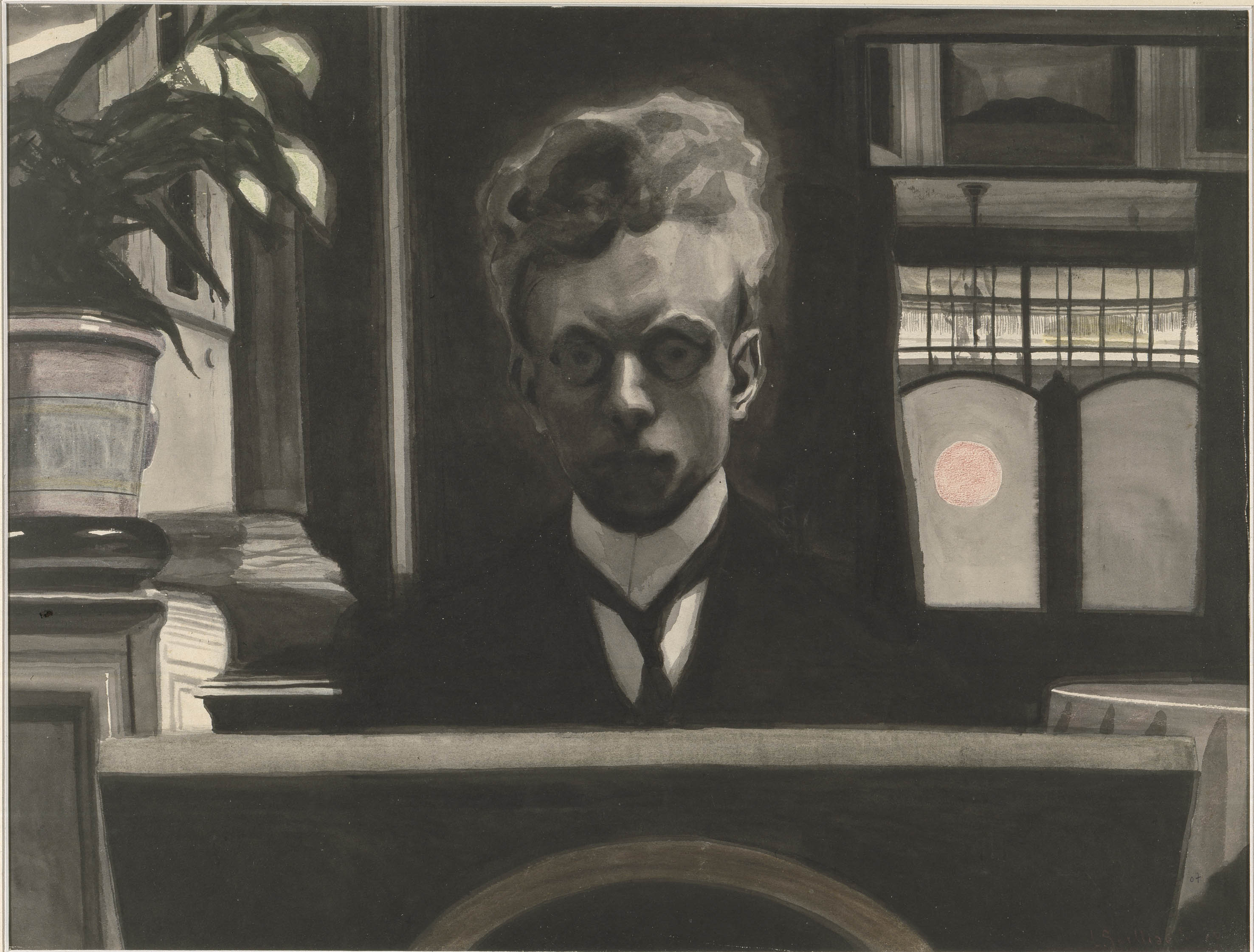I love Léon Spilliaert's art for its simplicity of form and the bitter and mysterious expression of his characters and landscapes. Spilliaert was a Belgian draftsman, illustrator, lithographer, and painter. In his early career, he contributed to the development of symbolism in the visual arts in Belgium.
Fascinated by the omnipresence of the North Sea and its natural elements, Spilliaert found renewal in long, solitary walks along the dike and deserted beaches, both day and night. During these walks, he allowed his imagination to drift, shaped by his contemporary surroundings.
To highlight the purity of his forms, Spilliaert embraced a restrained palette in his 1907 depictions of booms, dikes, and beaches. He primarily worked with Indian ink washes, enhancing them with delicate touches of green, red, or blue colored pencils. His careful layering technique allowed him to build gradients from light gray to deep black, culminating in velvety, saturated darkness. In certain areas, the ink’s density creates a glossy, almost impenetrable depth where light seems to disappear.
Today's work is a good example of this approach that emerges from the stark outlines of basic geometric forms. The foreground dike, the distant beach, and the storm-laden sky are defined through dramatic chiaroscuro contrasts. The scene appears almost like a photographic negative: the dike, which should reflect light, is rendered as a dark mass, while the beach, typically bright with sand, is instead muted and cold. Even the sea’s surface glows faintly as if clinging to the last rays of daylight. In this stark environment, Spilliaert conveys a universal human experience: isolation, longing, and the delicate interplay between solitude and connection.
P.S. Are you intrigued by today's painting? If so, explore the fascinating art of Léon Spilliaert! It is unique!
P.P.S. Here's your reminder to enroll in our free online course on How to Look at Art. Enjoy! :)

.jpg)
 Léon Spilliaert
Léon Spilliaert